The Humble Beginnings of 10 Startups
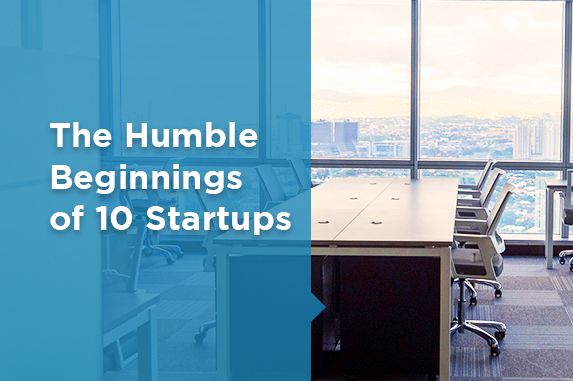
Even the world’s top brands that we all know and love today had small beginnings. It took a lot of hard work and buckets of good luck to grow from being startups to the household names that they are today.
Here are 10 companies that started from the bottom and went on to become the biggest brands in their respective industries:
-
APPLE
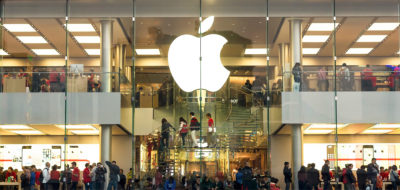
Steve Jobs is world-renowned as the genius behind the global industry giant that is Apple. You’ll be hard-pressed to go 10 meters anywhere without seeing someone using an Apple device. Many professionals nowadays carry Macs, iPads, and especially iPhones as part of their work gear.
And to think it all started in Jobs’ parents’ garage. He and Steve Wozniak had to generate a capital of $1,350 to start with; Jobs sold his Volkswagen microbus and Wozniak let go of his Hewlett-Packard calculator. With this, they were able to build up the Apple I, and sold enough of it to come up with a better design for the Apple II.
Apple has now reached a net worth of $1 trillion, the first tech company to ever be valued as much. Can you imagine that what you build in your garage today can be worth a trillion dollars in a few decades?
-
GOOGLE
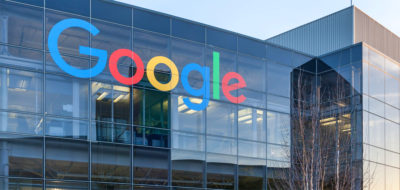
Did you know that Google is a ’90s baby? It was officially launched in 1998 by co-founders Larry Page and Sergey Brin. They started building up a search engine while Page was taking his doctorate degree from Stanford University. They would work late into the night in their dorm rooms, building up a server network with the only tools that they could borrow or afford. They would use every bit of credit they had to get a hold of discounted disks and hard drives.
Originally called BackRub as prototype, it was formally renamed to Google, which was also a misspelling of “googol”, a mathematical term for the number 1 followed by 100 zeroes. Can you imagine saying “Just BackRub it?” instead of “Just Google it?”
Google is now delving into the coworking industry with Campus, a venue for up and coming companies with specialty services for mentorships, training activities, acceleration programs, and access to Google’s knowledge and network base.
-
MICROSOFT
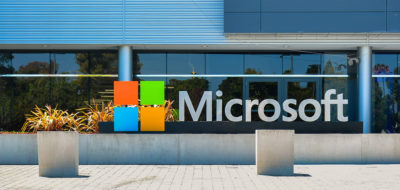
One does not simply start building a company without taking big risks. That’s why it’s always impressive when you meet people that have put everything on hold to pursue their dream, or at least chase an idea.
Microsoft founders Bill Gates and Paul Allen were old friends, both computer enthusiasts that once hacked into their high school computer. Thankfully, they didn’t get suspended but were instead offered a chance to improve on their school’s computer system.
Prior to starting the multi-billion dollar company, Gates and Allen started a venture called Traf-O-Data, which was a data analyzer for roadway counters, and provided reports for traffic engineers. Unfortunately, this was before the two were proficient in doing market research, so Traf-O-Data closed after a net loss of $3,494.
Fast forward to a few years, Gates would decide to leave Harvard University and Allen would quit his job as a programmer to focus building up their company, first known as “Micro-Soft” – a mix of the words “microcomputer” and “software”.
Today, Microsoft is an industry giant and is one of the many enterprises that are incorporating the coworking lifestyle into their culture. This is a convenient setup for fast-growing companies, where their team can simply set up their tools, plug in, and start working from any location.
-
FACEBOOK
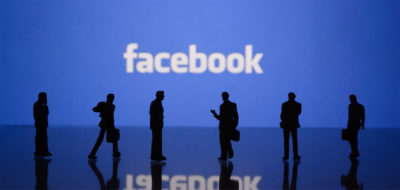
Referencing the movie, “The Social Network”, Facebook’s origins might be the more familiar story in this list. The site was launched from Mark Zuckerberg’s Harvard dorm room in 2004, originally named “thefacebook.com”.
It’s a challenge to find Facebook’s origin story as inspiring, considering that there’s plenty of controversy surrounding its beginnings. Initially, it was meant to be a network for Harvard students, which would have been in direct competition with the program that the Winklevoss brothers had hired Zuckerberg to create for them. It later spilled over to other universities, and afterwards opened to the public and became the Facebook we know today. This became a point of contention for the next few years as the Winklevosses, among other associated parties, claim that Zuckerberg had used their idea and their code, to build his own social network.
On the bright side, it’s quite impressive how the world’s largest social media platform was built by Zuckerberg in a number of months, with plenty of late nights logged in the Harvard dorm rooms accompanied by his college peers. They started hosting hackathons to find some of the best data nerds to work with, while also building up systems to improve their platform.
Now Facebook has more than 2 billion users every month. Aside from its headquarters in Menlo Park, Facebook also occupies coworking spaces in different cities to accommodate its ever expanding staff.
-
TWITTER
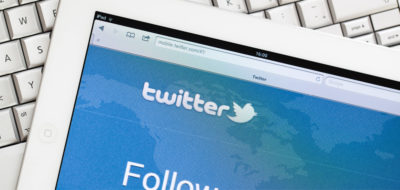
Twitter was born a little over a decade ago by the combined powers of Evan Williams, Noah Glass, Jack Dorsey, and Christopher “Biz” Stone, whose main connection was made from under Odeo, a podcasting platform that ended up having to evolve with the times.
It took a while for them to go from podcasting to microblogging – ultimately it was Dorsey and Glass that pushed for “twttr”, a platform from which you can share tidbits of your thoughts, and connect with a wider audience. In 2006, their team had created a working prototype for Twitter. Their employees would test it for the rest of the summer, using up their SMS credits just obsessing over the project. In August of the same year, Twitter gained thousands of users after an earthquake occurred in San Francisco, proving that Dorsey and Glass were onto something.
Later that same year, Williams would buy back the stocks from the rest of the investors, including Twitter, claiming that it was “too early to tell what’s there”.
Today, there are about 500 million tweets posted every day, equal to 5,787 tweets/second.
-
UBER
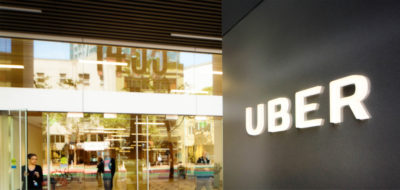
Both Uber founders Travis Kalanick and Garrett Camp had already co-founded startups prior to starting the disruptive transportation network company (or TNC).
In 2008, after attending an entrepreneurial conference in France, they were having a tough time hailing a cab during a snowy night. The two friends were just throwing ideas around about a car service that they could hire using an app. When they parted ways, Camp was hooked on the idea, and started developing their idea called UberCab. He and Kalanick started working on it together by summer of 2009, along with Oscar Salazar and Conrad Wheelan.
They would first launch in New York in early 2010 with only three cars, and later again in May in San Francisco. While they got a good amount of success in the beginning, it would be a long and arduous growth for Uber, competing with transport agencies and government regulators in almost every city they set up camp.
Uber is projected to be valued at $120 billion in 2019, with more than 110,000 active riders per month.
-
COCA-COLA
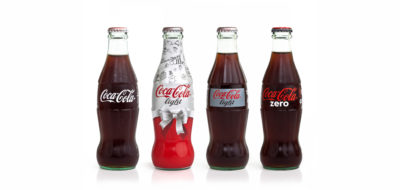
Curiosity may have exhausted the cat’s nine lives, but in the case of Coca-Cola, it resulted in a multi-billion dollar industry that may arguably be the best-known brand of all time.
The year was 1886. Pharmacist John Pemberton was dabbling in creating a beverage for the the burgeoning soda fountain market. He brought his small mixture of what would be the soda drink of the future to Jacobs’ Pharmacy. After giving customers a taste of the new drink, and getting their approval, the pharmacy started selling it for as low as ¢5 per glass.
The name Coca-Cola was coined by John Pemberton’s partner and bookkeeper, Frank Robinson. Frank also wrote the name using his unique script with which it is trademarked to this day. Robinson was also a big help in marketing the soda, as Pemberton was not an expert in selling a product. In 1888, Pemberton passed away, without seeing how big the Coca-Cola brand would become. It would finally take off in 1891, when Asa Griggs Candler acquired Coca-Cola as its sole owner. He would launch Coca-Cola’s top-notch marketing campaign with coupons for a free taste and stationery plastered with the Coca-Cola logo.
A truly global brand and a household name wherever you are in the world, Coca-Cola cashed in a revenue of $31.85 billion in 2018.
-
STARBUCKS
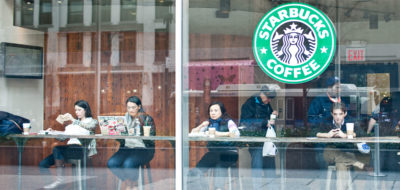
Originating from rainy Seattle, Starbucks is a ubiquitous hotspot in every metropolis. It was founded in 1971 by Jerry Baldwin, Zev Siegl, and Gordon Bowker – three teachers who thought it would be a good idea to use a vague literary reference for their coffee shop’s name. However, its success is mostly credited to Howard Schultz – a New York City native who grew from rags to riches.
Howard was hooked by this cup of Starbuck’s coffee, and went off to meet the founders. Schultz later joined the company as its director for retail operations and marketing in 1982, with only three stores operating.
After attending an international housewares show in Italy, Schultz was inspired by the coffee culture in Milan, where customers were served by name. This personal culture is what he decided to bring to the States. He started Il Giornale, which translates to “the daily.” This idea didn’t match what Starbucks was offering at the time, so he left the company to try and find investors for his passion. Finding the funding for Il Giornale proved to be a struggle, as Schultz was rejected more than 200 people. While he was unsuccessful for the next couple of years, he later acquired Starbucks for $3.8 million, becoming the CEO of the coffee shop we all know and love today.
Starbucks earned a revenue worth $24.72 billion in 2018 and has the largest number of stores with 29,324 branches worldwide.
-
COFFEE BEAN & TEA LEAF
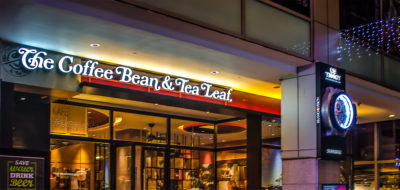
Coffee Bean & Tea Leaf, or CBTL, was founded by Herbert and Mona Hyman in 1968. It all started when they were on their honeymoon in Sweden, when they experienced authentic coffee.
This spurred Herbert on, as he was a natural entrepreneur who used to supply vending machines to fraternity houses in UCLA when he was a student. He then started a business that provided coffee services to offices. He would later meet his future wife, Mona, at an office of a client.
When they returned from their honeymoon, they opened a small store to sell coffee – but before customers even purchase anything, they get to see, smell, and taste the coffee. As gourmet coffee took off and raised the bar for all coffee enthusiasts, the business changed from selling just beans to selling custom beverages. It was an innovation that would establish CBTL as originator for the coffee shop experience that we now enjoy. CBTL is also credited with creating ice blended drinks!
Did you know that Starbucks once tried to acquire CBTL? When Hyman declined their offer, Starbucks threatened to overtake every CBTL branch by setting up shop wherever they were. This strategy ended up working out for the better for Hyman and company, as Starbucks delivered the coffee experience to the mainstream crowd. Soon, there was a CBTL to rival every Starbucks location.
Now, CBTL is one of the largest coffee and tea brand, with an annual revenue of $485 million.
-
DISNEY
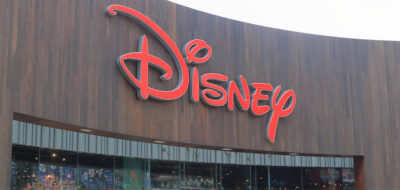
Walt Disney had been an artist since he was young. Aside from taking lessons and taking up extracurriculars in art, he was an ardent doodler and cartoonist in his spare time.
When he returned to the US after World War I, he would soon open his own studio, Laugh-O-Gram. However, being a talented artist and animator did not equate to being a skilled businessman, so Laugh-O-Gram ended up shutting down.
This was when he decided to move to California and take part in its burgeoning film industry. He started Walt Disney Studios with the help of his brother, Roy. In the early years, Disney was able to produce successful cartoons, and while it was a struggle to become financially viable, he was able to set up a new studio and take on more employees. Mickey Mouse, originally called Mortimer Mouse, was Disney’s first cartoon star.
Disney was a renowned perfectionist, and demanded excellence in every aspect of his business. It was a constant struggle for him to match his creative vision with the technological capabilities of his time and the corporate aspect of running a business. Nevertheless, he would establish Walt Disney Inc., which would change to WED Enterprises, to design and build theme parks in continuing his goal to “bring happiness to millions.”
—
Now that you’ve had a peek into the hardships that these companies went through, make sure to use these as an inspiration for when the going gets tough. Experience is truly the best teacher and every challenge that you endure is only going to help you grow.